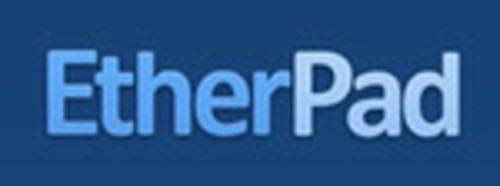Back in June the developers behind AppJet closed up shop to focus on EtherPad, the real-time collaborative editor we called “dead simple” in our initial review. Since then they’ve worked at a breakneck pace to improve EtherPad, trying to attract paying customers for hosted and on-premise installations. Today the company announced a fantastic new addition to EtherPad’s core capabilities: to go along with the real-time editor, they’ve added a real-time playback of edits they call the “Time Slider.”

The previous history system of EtherPad was fairly clunky. Users had to stop and save revisions in order to view them later, which disrupted the fast pace of collaborative editing that makes EtherPad such a joy to use. The new Time Slider solves the problems of the old system by letting you play back all the edits to a page. It works something like an online video player, letting you star particular spots of interest and go back and forth in time at will.
Rapid Innovation
EtherPad works on a freemium pricing model, letting anyone create a public EtherPad to share for free. For teams needing a more secure SaaS version, it’ll cost you $8/user/month and a self-hosted version for the enterprise is $99/user.
In order to draw in repeat customers, EtherPad knows it has to have something a little more feature rich than a simple editing app. They need integration with other apps, such as the alliance with group video conferencing tool TokBox they recently announced.
Real-time Revision History
EtherPad also needed a more robust audit trail of editing in order to make enterprises comfortable. They could have gone the more wiki-like route, by saving all revisions automatically. But those systems tend to have a certain amount of overhead when it comes to learning them, and they aren’t generally a good fit for real-time editors. Google Docs is a primary competitor of EtherPad, and the weakness of its revision system is definitely an example of this problem.
In trying it out I found the Time Slider to be very easy to use, and it gave a clearer picture of the entire stream of changes to an EtherPad document. The best way to understand it is simply to see it for yourself, so be sure to watch the video below.

















